Section Lobatae Rank Species | Genus Quercus Scientific name Quercus rubra Higher classification Oak | |
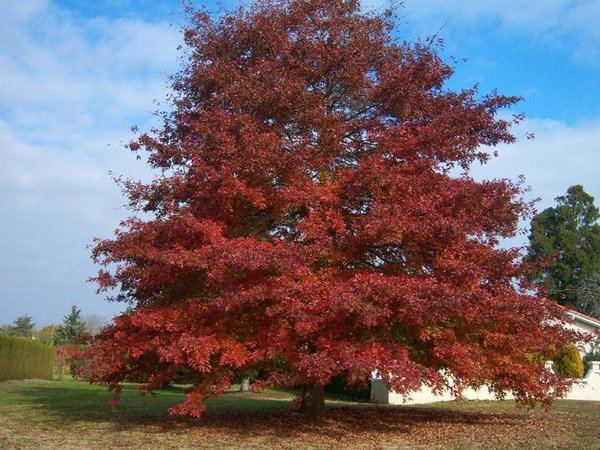 | ||
Similar Oak, White oak, English oak, Swamp Spanish oak, Sugar maple | ||
Quercus rubra, commonly called northern red oak, or champion oak, (syn. Quercus borealis), is an oak in the red oak group (Quercus section Lobatae). It is a native of North America, in the eastern and central United States and southeast and south-central Canada. It grows from the north end of the Great Lakes, east to Nova Scotia, south as far as Georgia, Alabama, and Louisiana, and west to Oklahoma, Kansas, Nebraska, and Minnesota. It has been introduced to small areas in Western Europe, where it can frequently be seen cultivated in gardens and parks. It prefers good soil that is slightly acidic. Often simply called red oak, northern red oak is so named to distinguish it from southern red oak (Q. falcata), also known as the Spanish oak. It is also the state tree of New Jersey and the provincial tree of Prince Edward Island.
Contents
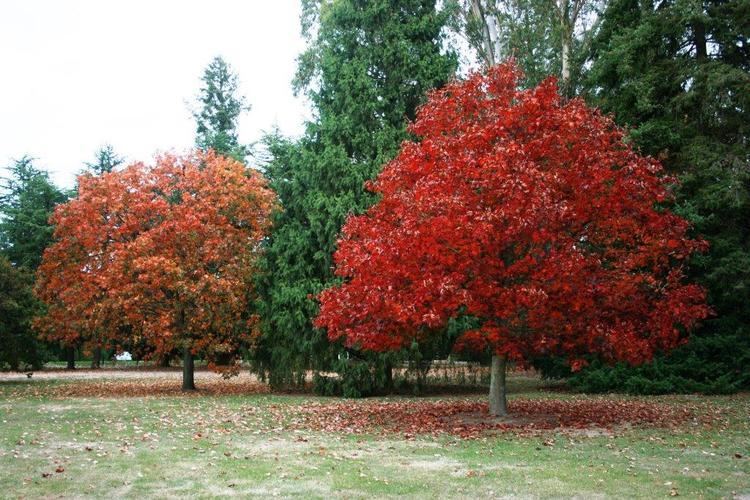
Description
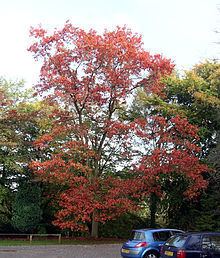
In many forests, this deciduous tree grows straight and tall, to 28 m (92 ft), exceptionally to 43 m (141 ft) tall, with a trunk of up to 50–100 cm (20–39 in) diameter. Open-grown trees do not get as tall, but can develop a stouter trunk, up to 2 m (6.6 ft) in diameter. It has stout branches growing at right angles to the stem, forming a narrow round-topped head. It grows rapidly and is tolerant of many soils and varied situations, although it prefers the glacial drift and well-drained borders of streams. It is frequently a part of the canopy in an oak-heath forest, but generally not as important as some other oaks.
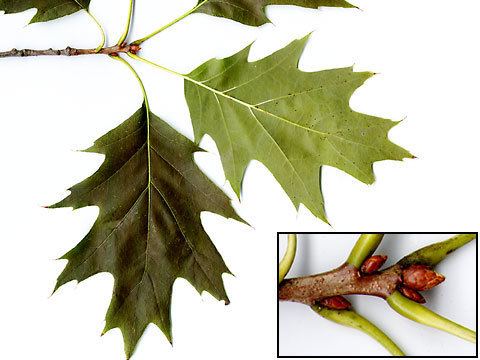
Under optimal conditions and full sun, northern red oak is fast growing and a 10-year-old tree can be 5–6 m (16–20 ft) tall. Trees may live up to 500 years according to the USDA, and a living example of 326 years was noted in 2001 by Orwig et al.
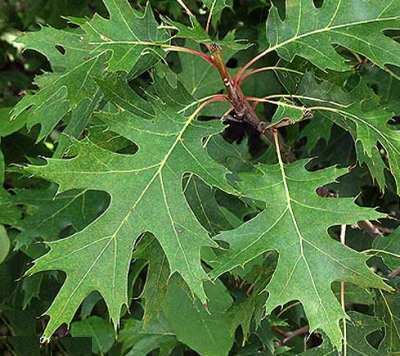
Northern red oak is easy to recognize by its bark, which feature bark ridges that appear to have shiny stripes down the center. A few other oaks have bark with this kind of appearance in the upper tree, but the northern red oak is the only tree with the striping all the way down the trunk.
Red oak acorns, unlike the white oak group, display epigeal dormancy and will not germinate without a minimum of three months' exposure to sub-40 °F (4 °C) temperatures. They also take two years of growing on the tree before development is completed.
Uses
The northern red oak is one of the most important oaks for timber production in North America. Quality red oak is of high value as lumber and veneer, while defective logs are used as firewood. Other related oaks are also cut and marketed as red oak, although their wood is not always of as high a quality. These include eastern black oak, scarlet oak, pin oak, Shumard oak, southern red oak and other species in the red oak group. Construction uses include flooring, veneer, interior trim, and furniture. It is also used for lumber, railroad ties, and fence posts.
Red oak wood grain is so open that smoke can be blown through it from end-grain to end-grain on a flat-sawn board. For this reason, it is subject to moisture infiltration and is unsuitable for outdoor uses such as boatbuilding or exterior trim.
Ornamental use
Quercus rubra is grown in parks and large gardens as a specimen tree. It is not planted as often as the closely related Pin Oak as it develops a taproot and quickly becomes difficult to transplant. Acorns should either be sown in the location where the tree is intended to be planted or else moved to their permanent location within the seedling's first year. As the tree gets older, the taproot gradually becomes less dominant and the lateral root network expands. Northern Red Oak is easy to start from seed, however the acorns must be protected from animal predation over the winter months.
As with other oaks, germination takes place in late spring when all frost danger has passed. The seedling grows rapidly for its first month, then pauses for another month, and sends out more new shoots until September when growth stops for the year. If the weather stays favorable, a third burst of growth may occur.
This oak is grown across Canada almost everywhere it will grow. It has naturalized in southeastern British Columbia near the Alberta border.
